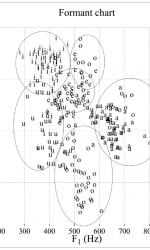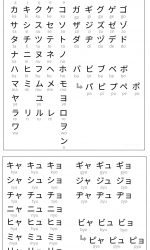Foreign Language Books << Nihongo – The Japanese language –
Nihongo – The Japanese language –
What kind of language is Japanese? We wanted to create a book that gives a thorough explanation for people who are not familiar with the language.

→ eBooks $9.99 // 1480yen
Amazon.jp◇ US、UK、Australia、Germany、France、Spain、Italy、Canada、Nederland、Brazil、Mexico、India)
Printed books $14.99 / 1980yen
Amazon.jp◇ Now available at Amazon: U.S. | the United Kingdom | Germany | France | Spain | Italy | Nederland | Poland| Sweden| Canada| Australia|
>>> Japanese version
In the main chapter, we look into the characteristics of the Japanese language through everyday phrases like this, which can often be seen on social media.
What kind of language is Japanese? We wanted to create a book that gives a thorough explanation for people who are not familiar with the language.
The book was co-written by university language researchers (PhD holders) who study the languages of the world, who specialize in topics such as what are the common characteristics among languages and what are their ‘individual characteristics’ (it is a field of Linguistics called Linguistic Typology). It was essential for the book to be written by researchers studying the Japanese language as one of many languages in the world, instead of Japanese language specialists.
We also asked Japanese language teachers with a long history of teaching English speakers, to write about different learning methods. The book is filled with rich information on the ways of studying Japanese by making use of internet resources, a new approach towards studying Japanese in this digital era, and the Japanese input on keyboard and smartphone, together with many useful website links.
If you happen to come in contact with the Japanese culture and become interested in the Japanese language too, we recommend you read this book. You can get to know about the characteristics, history and evolution, writing and sounds, and even the internet slang of Japanese. This book should be interesting, even if you do not intend to study Japanese.
This book is available in English and Japanese. It is an interesting book which gives a fresh perspective for native speakers as well. Those of you with advanced language skills, challenge yourself to read it in Japanese too.
👉 Please note that images may not correctly align with the sentence because some images are shown in Japanese.
👉 Japanese is used in some parts. In most cases, the image will be correctly displayed, but it may have visualizing problems if you are using a hardware which is not compatible with Japanese characters. In such cases, please install a Japanese font to try to see if it can be correctly displayed. Below are some free Japanese fonts which have high readability rates.
Authors
Chapter 1: Is Japanese Difficult?
Chapter 2: Japanese…
Natsuko Nakagawa Ph.D.
PhD in Human and Environmental Studies,Kyoto-University
Assistant Professor
The University at Buffalo, Doshisha-Uni, Kyoto-Uni, Aomori-uni, Chiba-university
Visiting Researcher
National Institute for Japanese Language and Linguistics
Interest
study of dialects, colloquial language.
https://sites.google.com/site/nakagawanatuko/home
Chapter 3: Variations of the Japanese Language
Tomoyuki Terasaki Ph.D.
PhD in Linguistic Science (Human and Environmental Studies)
Assistant Professor
Center for Japanese Language and Culture of Doshisha University
Chapter 4: Let’s Start Learning Japanese!
by Web Japanese Editorial Department(Kouta Aramaki)
supervisor
Yosuke Hashimoto Ph.D.
Research associate at Akita International University
Interests
Japanese language education and Cognitive neuroscience
http://dbsg.aiu.ac.jp/html/122_ja.html
translation
澤田ヴィクトーリア Viktória Sawada
English proofreading
Gabriel TENAGLIA
Mr. Tenaglia is an undergraduate student at Ursinus College, currently studying abroad at Akita International University. He is a an English major and a Japanese language minor, and will graduate in the year 2020.
Editors
- Yasuomi Kinoshita 木下 泰臣
- Jennifer Krafft ジェニファー クラフト :Ms. Krafft is a graduate student in clinical psychology at Utah State University.
- Kouta Aramaki 荒牧 浩太
Illuslation
Hiroshi Kurihara
*ダ鳥獣ギ画 http://www.chojugiga.com/
Cover art
webjapanese henshuubu
Art direction Nanako Ohno
Chapter 1: Is Japanese Difficult?….001
1. Introduction…..003
2. Things Considered Important in the Japanese Language…..009
3. The Reason Why There Are So Many Ways to Call People in Japanese
…..013
4. What are the Characteristics of the Sounds Used in Japanese?
…..019
5. Is the Japanese Grammar Unique? : Categorizing Japanese Words
…..026
6. Is It Problematic After All? About Conjugation and Irregular Verbs
…..027
7. About Word Order and Cases…..030
8. Variations of the Japanese Language…..033
9. To Summarize…..039
Chapter 2: Japanese……..040
1. The Sounds of the Japanese Language…..044
2. Japanese Characters…..053
3. Japanese sentences…..071
4. Delving Deeper into Japanese…..082
Column: 7 Facts About Kanji…..096
Chapter 3: Variations of the Japanese Language Tomoyuki Terasaki
…..104
1. Variations over time…..108
2. Regional Variations…..120
3. Variations by Register…..133
4. Variations by Tools…..140
Column: The Net Language as a Register…..153
Summary – Ever-Extending Variations…..159
Chapter 4: Let’s Start Learning Japanese!…..160
1. How to Study?…..163
2. How to Choose Learning Materials and Exams…..168
3. Japanese Learning in The Internet Age…..177
4. Going to Japan to Study…..203
Kim, a shy first year university student living in America, lately became interested in one of his classmates. She shows up for the second period Introduction to Political Science classes on Wednesdays, always taking notes enthusiastically in the first row, but without speaking much. But occasionally she makes sharp remarks simply, using short phrases. Judging by her pronunciation, she is most probably an exchange student. Based on the conversations of other students, it seems like her name is Makoto. She is always surrounded by her exchange student friends, so it is hard to find a chance to speak with her. The fact that they are always talking lively in a language that only they can understand makes it even more difficult to talk to her. What could that language be?
Sometimes he can catch a few familiar words, that might not make sense to other Americans. Like ‘DRAGON BALL’ and ‘EVANGELION’… Could it be that they are talking about ‘that’ known by Kim too? Or perhaps it is just a coincidence that the who-knows-what language they are speaking has similar words?
(笑い) → (わら) → (wara) →(w → w
Using the ‘romaji input’ when typing ‘(笑い)’ on the keyboard, the characters actually entered are ‘(warai)’. This ‘warai’ kept becoming shorter, until it ended up expressing laughter with a single character. Becoming a single character made it easy to type, and it evolved in a way that joining many ‘w’ together shows the level of laughter.
Smartphone input softwares have a function called ‘predictive conversion’. It displays frequently used words as conversion candidates while typing them. For example, after inputting ‘ろび’, ‘ロビ観’ will already appear as an option, and selecting it makes it unnecessary to type ‘かん’. In the case of set terms, after typing the single character of ‘お’, words like ‘おつかれさまです’ are already offered. Using this predictive conversion well makes it possible to type quite fast. This is also one of the big changes regarding ‘writing in Japanese’.
2. Things Considered Important in the Japanese Language
3. The Reason Why There Are So Many Ways to Call People in Japanese
4. What are the Characteristics of the Sounds Used in Japanese?
大根、ネギ 納豆 (Night calls Making night calls)
https://www.youtube.com/watch?v=3hNd2CN8GvI
餃子 水餃子 (Georgia, sweet Georgia)
https://www.youtube.com/watch?v=vUYqkZ4mEsY
5. Is the Japanese Grammar Unique? : Categorizing Japanese Words
6. Is It Problematic After All? About Conjugation and Irregular Verbs
7. About Word Order and Cases
8. Variations of the Japanese Language
Tokyo http://www.youtube.com/watch?v=xS92XkVKM0Q
Ishinomaki http://www.youtube.com/watch?v=GEI5LxkPi-4
Hiroshima http://www.youtube.com/watch?v=wMz6XjgfBMY
Oosaka http://www.youtube.com/watch?v=ITg_A_LX1jA
Hiroshima
9. To Summarize
*Hiragana evolution.at Wikipedia (GFDL – CC-BY)
2. Regional Variations
3. Variations by Register
4. Variations by Tools
Column: The Net Language as a Register
Map of Japanese language learning
https://goo.gl/tbJui4
2. How to Choose Learning Materials and Exams
Japanese learning materials
https://webjapanese.com/support/tips/japanese-learning-materials/
3. Japanese Learning in The Internet Age
IPA font
https://moji.or.jp/ipafont/
NOTO font
https://www.google.com/get/noto/
Free Japanese font
https://www.freejapanesefont.com/
Site about Japanese fonts
https://coliss.com/
List of twitler in Japan
https://twitter.com/webjapaneseB/lists
4. Going to Japan to Study
Below is a list of Japanese language schools which admits students with study visas. This document was created and translated into English based on data submitted to the Ministry of Education, Culture, Sports, Science and Technology (MEXT) of Japan. The data was taken in 2017. The figures are from around 2015. The original MEXT data can be found here. You will be able to find information such as enrollment limits, nationality of enrolled students and its numbers, number of successful candidates of the Japanese Language Proficiency Test and university advancement rates etc. Please use them as your guide to choose your Japanese language school.
List of Japanese language school in Japan
https://docs.google.com/spreadsheets/d/1N6Gtkj1na2FU-RMF_xYzzXKq-yJSsp21YAmy6Rw49ro/edit?usp=sharing
How to choose the best Japanese language school.
https://webjapanese.com/support/tips/school/
Basic 500 words (spread sheet,mp3-files)
> Quizlet https://quizlet.com/_6rzx2m
Japanese syllabary
50音表
Bybee, J. and Scheibman, J. 2006. The effect of usage on degrees of constituency: the reduction of don’t in English. Linguistics 37(4): 575-596.
Clark, E. V. 1983. Convention and contrast in acquiring the lexicon. In Th. B. Seiler & W. Wannenmacher (Eds.), Concept development and the development of word meaning. Berlin & New York: Springerverlag. pp. 67-89.
Clark, E. V. 1987. The principle of contrast: A constraint on language acquisition. In B. MacWhinney (Ed.), Mechanisms of language acquisition. Hillsdale, NJ: Lawrence Erlbaum Associates. pp. 1-33.
Deutscher, G. 2010. Through the language glass: Why the world looks different in other languages.
Matthew S. Dryer. 2013. Order of Adjective and Noun. In: M. S. Dryer & M. Haspelmath (eds.) The World Atlas of Language Structures Online. Leipzig: Max Planck Institute for Evolutionary Anthropology. (Available online at http://wals.info/chapter/87, Accessed on 2014-08-15.)
Markman, Ellen M. 1989. Categorization and naming in children: Problems of induction. Cambridge: MIT Press.
村上春樹. 1985. 世界の終わりとハードボイルド・ワンダーランド. 東京: 新潮社.
Murakami, Haruki. 1985. Hard-Boiled Wonderland and the End of the World. Tokyo: Kodansha International Ltd. (Translated by Alfred Birnbaum)
Peterson, G. E. and Barney, H. L. 1952. Control methods used in a study of the vowels. Journal of Acoustical Society of America 24(2): 175-184.
Scheibman, J. 2000. I dunno: A usage-based account of the phonological reduction of don’t in American English conversation. Journal of Pragmatics 32: 105-124.
Tomasello, M. 2003. Constructing a language: A usage-based theory of language acquisition. Cambridge: Harvard University Press.
Werker, J. F. and Tees, R. C. 1984. Cross-language speech perception: Evidence for perceptual reorganization during the first year of life. Infant Behavior and Development 7: 49-63.
平原研究室のホームページ http://auris.pu-toyama.ac.jp/ResearchProject_J.html (Accessed on 2013/08/06)
金水敏. 2003. ヴァーチャル日本語 役割語の謎. 東京: 岩波書店.
NIKO100! http://ameblo.jp/wakattazo/entry-10687317852.html (2016/07/25アクセス): 「っ」「ー」のミニマルペアの例文を参照。
日本語複合動詞の言語類型論的意義 影山太郎 2014
節連接の五段階 角田太作 2012
日本語教育における音声指導 浦上 典江 2004
いわゆるモナリザ文に対する国語教育学・国語学の共同的アプローチ複合語のタイポロジーと日本語の特質 2010 影山太郎
英語と日本語の「時制・相」について 2007 宗宮 嘉代子
類型論的観点からの日本語 群司 隆男
語彙的統語的複合動詞 影山太郎
日本語の構文的特徴から見えてくるもの 2012 加藤 薫
現代日本語の複合形容詞・派生形容詞・畳語形容詞について 2006 田村 泰男
助詞の使用度数と結合価に関する計量的分析方法の検討 2012 真田 治子
日本語の疑問文の歴史素描 2015 金水敏
ことばと思考 岩波新書 今井むつみ 3刷 2011年9月5日
外国語学習の科学 岩波新書 白井恭弘 9刷 2010年11月25日
日本語と外国語 岩波新書 40刷 鈴木孝夫 2011年11月25日
みえる日本語 見せる日本語 創拓社 1刷 2014年1月6日 江副隆秀
図解日本語 三省堂 3刷 2008年 5月20日 沖森卓也、木村義之、陳力衛、山本真吾
名字と日本人 文春新書 武光 誠 4刷 平成10年12月25日













